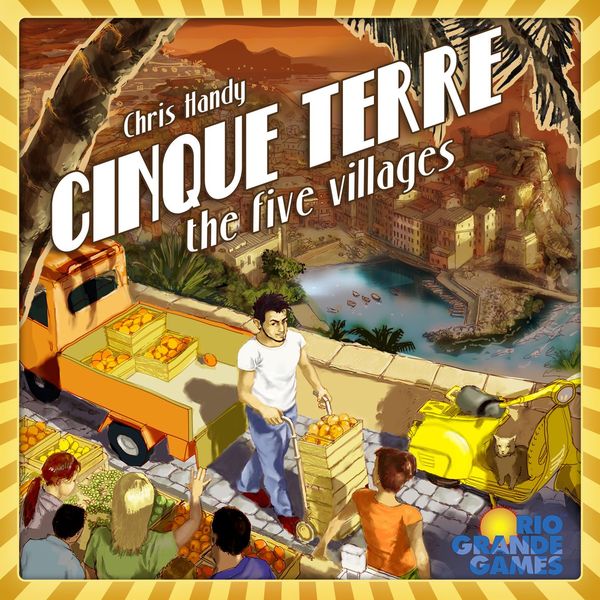Cinque Terre (2013) Board Game
Cinque Terre is a board game that was released in 2013 and designed by Martin Hoffmann, Claus Stephan, and Mirko Suzuki. The game is set in the stunning Italian region of Cinque Terre, known for its colorful homes and picturesque coastline. Players take on the role of farmers trying to sell their produce in various villages, while also delivering goods to fulfill orders and earn points.
Game Components of Cinque Terre
How To Setup Cinque Terre
To set up the game, players start by placing the board in the middle of the playing area. The three fields are randomly seeded with produce cards, and each player chooses a truck cart and places it at the starting point. Each player receives a set of starting order cards, which outline specific produce orders they must fulfill. The produce cards are shuffled and placed face-up or in a draw deck. The demand dice are rolled to determine the initial demand for each crop in the villages.
Gameplay Mechanics and Game Objective
– Move the produce cart up to four spaces in a clockwise direction.
– Take a produce card from the tableau or draw deck.
– Harvest crops from a field by playing matching produce cards.
– Sell produce in a village.
Player Experience
Cinque Terre offers a laid-back and calming gameplay experience, making it ideal for families, non-gamers, and casual players. The game features simple and intuitive rules, allowing turns to proceed smoothly and quickly. While it requires smart decisions and planning, it is not too complex, encouraging casual conversation around the table. The game’s accessibility and broad appeal make it a great gateway game, similar to Ticket to Ride or Kingdom Builder.
Pros
Cons
Personal Thoughts on Cinque Terre
Cinque Terre is a wonderful introduction to the world of Euro games, particularly for those new to board gaming. It strikes a balance between simplicity and strategy, making it an excellent choice for families and casual gamers. However, it may not satisfy hardcore gamers seeking deeper strategy or more interactive elements. Overall, it is a great gateway game that encourages socialization and enjoyable gameplay without overwhelming complexity.
We are supported by our audience. When you purchase through links on our site, we may earn an affiliate commission, at no extra cost for you. Learn more.

